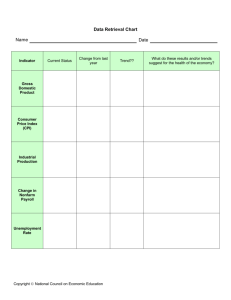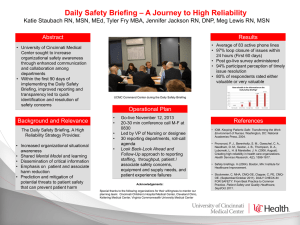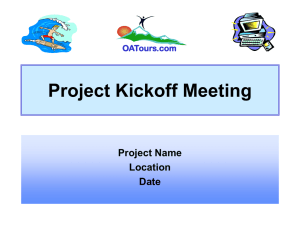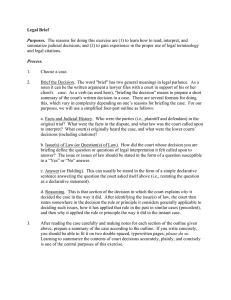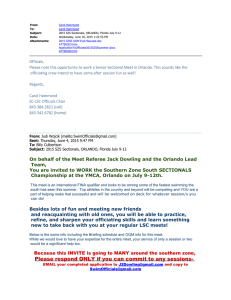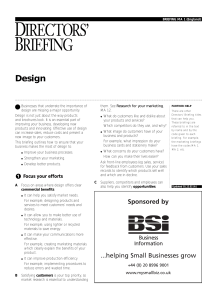D O C U M E N T E D ... RAND Linking Effectively: Learning Lessons from Successful Collaboration in
advertisement
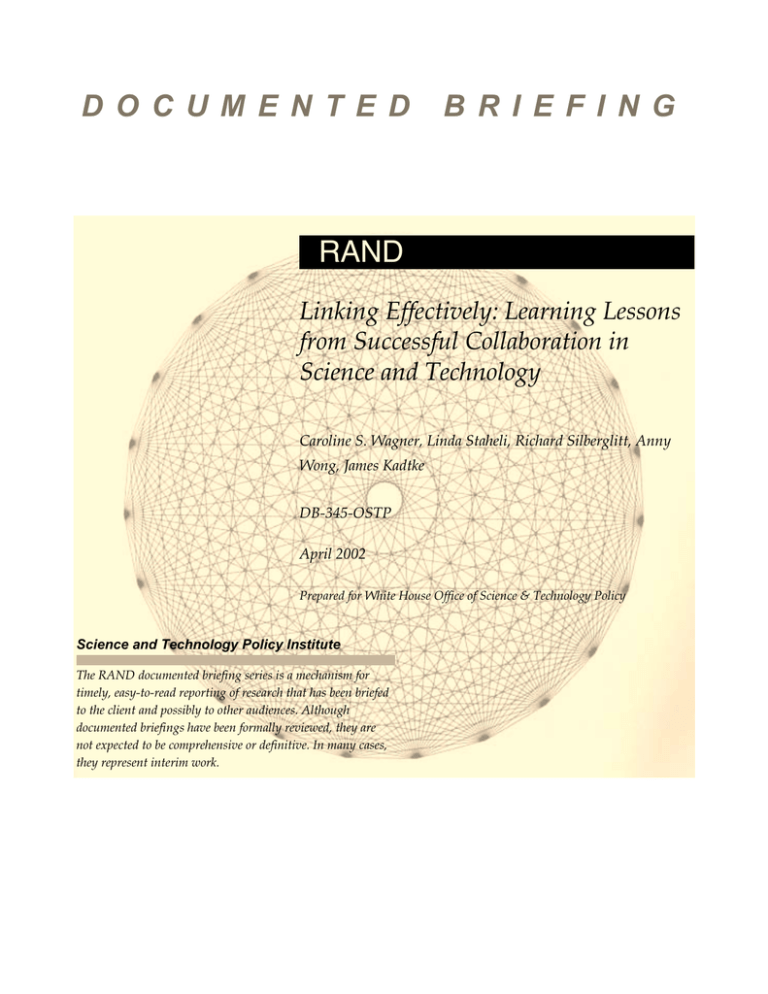
D O C U M E N T E D B R I E F I N G RAND Linking Effectively: Learning Lessons from Successful Collaboration in Science and Technology Caroline S. Wagner, Linda Staheli, Richard Silberglitt, Anny Wong, James Kadtke DB-345-OSTP April 2002 Prepared for White House Office of Science & Technology Policy Science and Technology Policy Institute The RAND documented briefing series is a mechanism for timely, easy-to-read reporting of research that has been briefed to the client and possibly to other audiences. Although documented briefings have been formally reviewed, they are not expected to be comprehensive or definitive. In many cases, they represent interim work. SUMMARY This briefing seeks to answer three questions: (1) Why study the subject of formal, government-sponsored collaboration? (2) What did we learn from the four case studies that gave an in-depth look at the U.S. experience in sponsoring and participating in these programs? and (3) Can these programs be evaluated and are they worth the extra effort that is required to initiate and sponsor them? This briefing is organized to answer these questions, as well as to raise points of discussion and debate among those interested in this subject. It is presented in a format that draws lessons from the case studies and then presents key questions that emerged from the cases that can serve as a guide to others seeking to formulate similar collaborative programs. The first section discusses the growing role that international collaboration is playing in science and technology (S&T). Here we also discuss the case study methodology used for this study. The second section presents a framework of “lessons learned” that emerged from our examination of cases of successful collaboration. RAND created this framework as a tool to help policymakers create effective linkages in the future. The third section discusses, from the U.S. perspective, what people reported to us as some of the benefits of participating in international collaborations. The briefing has two components: a set of slides and a written accompaniment. The two parts are designed to be used together and read as a report, and it can also serve as the basis for a workshop. Agency officials seeking to explore the creation of formal international collaborations may wish v to use this briefing to generate discussion and comment among colleagues and potential collaborators. It is important to set out the context of some common terms used in this report: • S&T refers to the many different investments made by the governments in basic research, in applied research, in development of equipment and standards, and in data collection and analysis needed both to increase knowledge about the natural world and to help the government in its various missions. • Research and development (R&D) is a subset of S&T activities. The term refers to programs and projects budgeted as “research and development” by federal agencies. These are activities that seek to apply the scientific method to specific experimental questions identified by government agencies as important and validated by scientific peers as worthwhile. • Curiosity-driven research is the set of S&T activities that are proposed by scientists and conducted, usually as basic research, because the subject is not well understood and where the application of the scientific method of observation and experimentation may add to the stock of knowledge. • Mission-oriented research is the set of S&T activities that are defined by government agency officials who commission or conduct research (usually applied research or development) that will advance knowledge needed for an agency to carry out its mission. • Policy-oriented research is the set of S&T activities that are defined by government officials or elected representatives to reach a policy-oriented goal using S&T as a tool. • Cooperation refers to all the programs, projects, and support activities sponsored by the U.S. government with foreign entities that have a scientific or technical component. It can include joint R&D, technical vi assistance, technology transfer, standards development, and other types of joint activities. • Collaboration refers to the specific scientific activities (research and observation, experimentation, data collection, publication) conducted by scientists working together on a common research project. • “Champion” is a term applied to a scientist who has taken on the task of promoting to interested parties—legislators, other scientists, the public— the value of government funding for a specific program or course of research. vii
